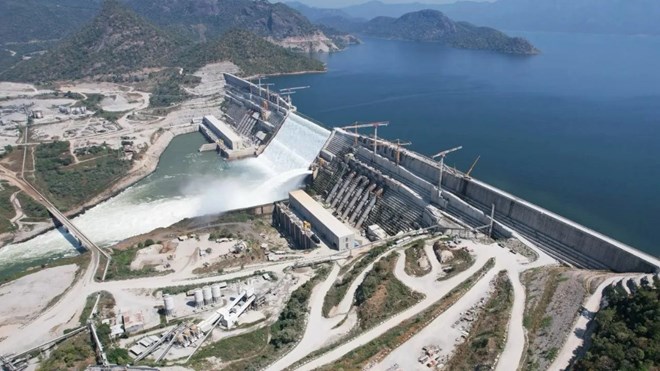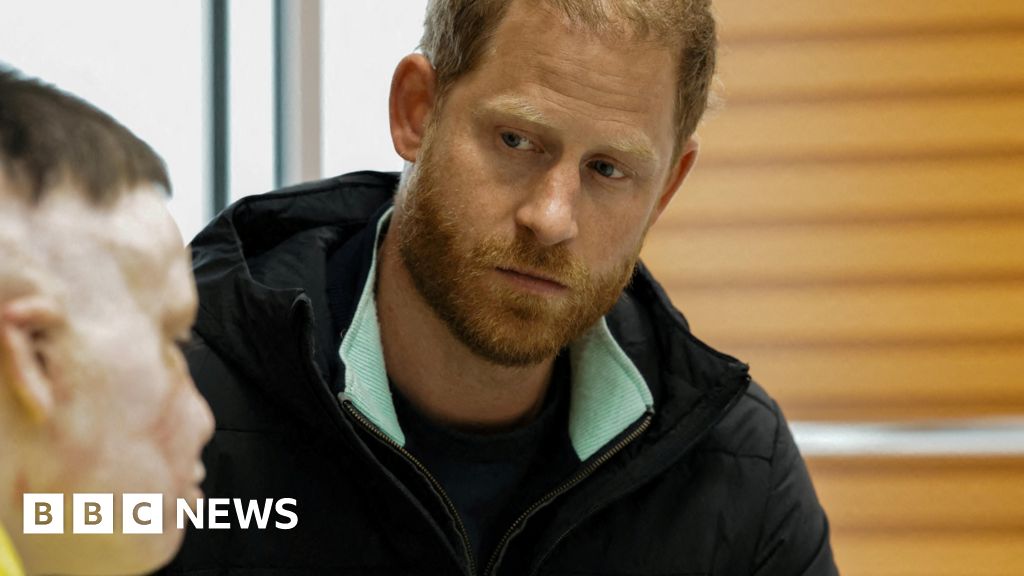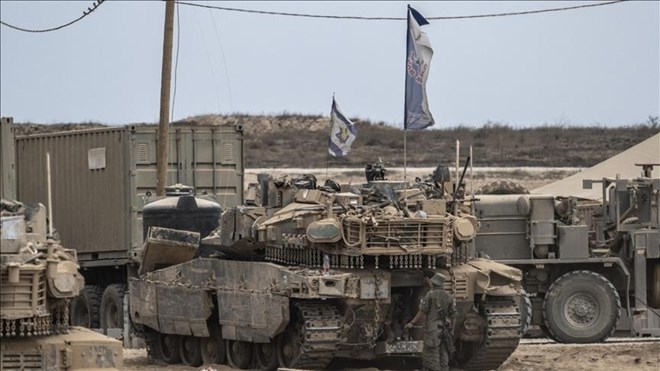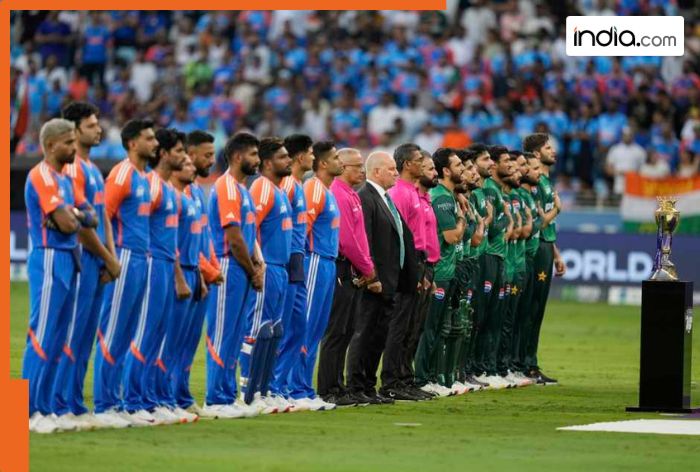
Hiiraan Online
Today from Hiiraan Online:
Somali Music
Google Plus
advertisements
Rights vs. Responsibility: The Danger of Ethiopia’s Resource Nationalism
FacebookFacebook messengerTwitterWhatsAppLinkedInTelegramEmail
By Sadik Warfa
Thursday September 18, 2025
“We must learn to live together as brothers or perish together as fools.” This quote, widely attributed to Martin Luther King Jr., reminds us that humanity is interdependent; when neighbors are ignored, all suffer. Our elders understood this long before modern civilization; in Somali we say, “Nabadda waa furaha nolol wanaagsan, waana jidka kaliya ee daris lagu noqdo,” meaning “Peace is the key to a good life, and it is the only path to being a true neighbor.” Ethiopia would do well to remember this lesson in the context of the Grand Ethiopian Renaissance Dam. By disregarding the voices of Egypt and Sudan, it risks turning a shared lifeline into a source of conflict. Shared rivers demand, shared responsibility otherwise, we all lose.
Humanity began along the Nile, one of the cradles of civilization, where some of the earliest communities flourished. From the fertile banks of the river, agriculture was born, trade routes were established, and knowledge spread across the ancient world. The Nile gave rise to some of humanity’s most significant advancements in science, architecture, and governance, and it remains a lifeline for millions across Africa today. The Nile is not the property of a single nation; it is a shared heritage that belongs to all of humanity.
On Tuesday, 9 September, Ethiopia’s Prime Minister Abiy Ahmed flanked by dignitaries including the Presidents of Somalia, Djibouti, South Sudan and Kenya, officially inaugurated the Grand Ethiopian Renaissance Dam (GERD) hailing it as “the greatest achievement in the history of the Black race”.
The dam’s wall spans 1.78km (1.1 miles) across a valley and measures 145m (475 feet) high, it is built using 11 million cubic meters of concrete and has a giant reservoir, named Lake Nigat. First mentioned by the U.S. Bureau of Reclamation (USBR) under Emperor Haile Selassie’s administration in 1956, the construction of this dam has taken decades. Its development was stopped by a coup in 1974 when the Mengistu Haile Mariam overthrew Haile Selassie. The project was then after planned by Former Prime Minister Meles Zenawi in secret and referred to as project X, a project he considered as crucial for gaining leverage in the region hoping that controlling the Flow of the Nile was a way to wield regional clout. Former Prime Minister Meles Zenawi laid GERD’s foundation stone on April 2, 2011 and 14 years later, his dream has come to fruition and on the northwestern part of the country, approximately 14 km from the Ethiopian-Sudanese border lies the Dam.
While Ethiopia cheers this with a nationalist fervor its downstream neighbors Egypt and Sudan remain anxious, they have long raised concerns that the dam could interfere with their water supply. Egyptians call Egypt “the gift of Nile,” Herodotus, a 5th-century Greek historian in his book the “Euterpe” wrote that “Egypt is the gift of the Nile,” since 95% of its population live along it, depending on it for its livelihood. Furthermore, with the lack of rain in their area Egyptians believe the Nile is their soul connecting not only their cultures but also their history and often their spirituality.
Historically, a 1929 treaty (and a subsequent one in 1959) allowed Egypt and Sudan access to almost all waters of the Nile. The colonial-era document between Egypt and Great Britain, who believed they were signing on behalf of its colonies including Sudan, Kenya, Uganda and Tanganyika, granted Egypt the veto power over any projects made by the upstream countries that would interfere with its portion of the waters. Ethiopia has however made it clear that it does not recognize the decades-old Nile water treaties, arguing they never signed the colonial-era impositions. Instead, Ethiopia says the establishment of the 1999 Nile Basin Initiative (NBI) a partnership of ten countries (Burundi, DR Congo, Egypt, Ethiopia, Kenya, Rwanda, South Sudan, Sudan, Tanzania, and Uganda, with Eritrea as an observer) is proof that control of river Nile can no longer rest solely with Egypt and Sudan. Ethiopia maintains it has rights to use its natural resources to empower its citizens and by extension its nation.
Multiple international mediation attempts have been made to deliberate on this matter, but most have failed to deliver binding agreements. The African Union (AU) under the principle of African Solutions to African problems, and the US President Donald trump during his first term in 2017-2020, prepared numerous draft Agreements that Ethiopia walked away from saying they were in favor of Egypt. Egypt has also sought the help of the United Nations Security Council writing two formal diplomatic letters warning that the development and filling of GERD threatened the peace of the region; the Council avoided direct involvement in this matter and urged the nations to resolve the dispute through negotiations under the African Union’s Framework.
This struggle for a written agreement between Ethiopia, Egypt and Sudan closely mirrors the Syria, Iraq, and Turkey control of the Tigris and Euphrates rivers tension that has been ongoing since the 1920s. Turkey, using its Southeastern Anatolia Project (GAP), built a system of dams, the most prominent of which is Ataturk Dam, for purposes of hydropower generation and irrigation of farmlands. These projects greatly decreased downstream flows of water into Syria and Iraq where agriculture and drinking water heavily relied on the rivers. Turkey claims to have the right to manage resources on its land, Syria and Iraq blame it on the unilateral domination of border-crossing lifelines. In either scenario, the upstream states claim interest in sovereignty and development whereas the downstream states perceive existential threats. These similarities draw attention to an international fact Transboundary; Rivers are not only environmental but also political assets where collaboration or conflict is likely as nations focus on collective advantage rather than individual action.
The development of an international law that governs use and sharing of resources such as water would have really helped in such a situation. The current available ones such as the UN Convention on the Law of the Non-Navigational Uses of International Watercourses (1997), adopted by the UN in 2014, establishes rules for cooperation, information sharing, and dispute resolution, but countries like Ethiopia or Turkey have not ratified it making it hard to use it to govern them. Further, the three countries, Sudan, Ethiopia and Egypt ought to adopt a two-step approach: build confidence by agreeing upon terms for filling the dam’s reservoir that do not harm downstream countries and two negotiate a new, transboundary framework for resource sharing to avert future conflicts. Finally, I think Ethiopia should also realize that this is not about power and political muscle and embrace a spirit of collaboration; now the Dam is here, how can you collaborate?
Ethiopia’s appetite to dominate regional resources, whether water or access to ports raises serious concerns. Just as it insists on unilateral control over the Nile through the Grand Ethiopian Renaissance Dam (GERD), Ethiopia continues to advance strategic ambitions at the expense of Somali sovereignty. Just last year on January 1, 2024, Ethiopia approached the Somaliland administration and asked them to sign an illegal MoU. The MoU stipulated that Somaliland Administration would lease Ethiopia Access to the Red Sea, a move that Somalia’s Federal government condemned as a violation of its sovereignty. This pattern signals not cooperation, but domination, undermining the spirit of shared prosperity that Africa desperately needs.
Somalia should also view what Ethiopia has done on the Nile as a dangerous precedent, remembering that our lifeline for irrigation, drinking water and agriculture especially in the southern regions depend on the two rivers, River Shabelle that rises in the Ethiopian Highlands and flows into Somalia, and the Juba River, which starts in Ethiopia and flows through Somalia. If Ethiopia could ignore the protests of Egypt and Sudan arguing sovereignty and development rights what could prevent it from building dams on the Juba and Shabelle rivers?
If Africa allows any nation to dictate terms on transboundary resources, it will set a dangerous precedent for the continent’s unity and stability. The GERD, which could have been a symbol of cooperation and continental pride, risks becoming a flashpoint of mistrust and exploitation. To prevent this, it must be managed with fairness, dialogue, and respect for sovereignty. The Nile, which gave humanity agriculture, trade, and culture, must now give Africa something even greater: peace, cooperation, and a shared future.
Mr. Sadik Warfa, Consultant in international relations, governance and labor, is a Former Minister of Labor and Social Affairs and also served as Member of Federal Parliament for Mudug Constituency, Somalia.
Opinion| Privacy Policy|Sports|Somali Music|Somali Map
All Rights Reserved Copyright. © 1999-2025, www.hiiraan.com



